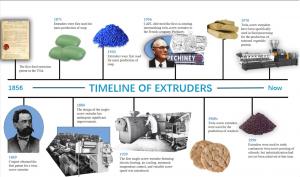Wheat Extrusion Processing Technology for Optimizing Process Parameters and Enhancing Nutrient Retention
GA, UNITED STATES, February 27, 2025 /EINPresswire.com/ -- This study reviews the use of extrusion2 in processing wheat-based products. It highlights that extrusion parameters—such as temperature, pressure, die size, and shear rate—significantly influence the microstructure and nutritional properties, including starch gelatinization and protein denaturation. These findings suggest that extrusion can enhance nutrient retention and drive product innovation, addressing challenges in traditional wheat processing.
Wheat is a cereal crop used in many ready-to-eat products such as bread, noodles and cakes due to its favorable sensory qualities and processing properties. The extrusion process further enhances these products by precisely controlling processing parameters to improve their nutritional value and functionality.
In a review published in the KeAi journal Food Physics, a team of researchers in China studied the effects that extrusion process parameters have on the structural, functional, and physicochemical properties of wheat-based products. They also discussed specific applications of extruded wheat products.
“One of the most exciting findings is how extrusion processing not only improves the sensory properties of wheat products but also reduces allergen content,” shares corresponding author Professor Chao Ding, an Associate Dean at the School of Food Science and Engineering at Nanjing University of Finance and Economics. “Our work highlights the potential of fine-tuning extrusion parameters to transform traditional wheat processing methods, offering a pathway to healthier and more sustainable food production.”
Further, specific adjustments in the extrusion process can lead to favorable structural changes, like improved starch gelatinization and protein denaturation, which in turn enhance overall product functionality.
“Our study also places extrusion technology in the context of modern consumer trends toward healthy eating and sustainable development. Extruded wheat products not only offer nutritional and sensory benefits but also promise reduced energy consumption and environmental impact,” says Ding.
Despite challenges like higher production costs and technical complexities, this review points to a clear potential for optimizing the balance between product quality, nutritional value, and production efficiency.
DOI
10.1016/j.foodp.2025.1000501
Original Source URL
https://doi.org/10.1016/j.foodp.2025.100050
Funding information
This research was funded by the National Natural Science Foundation of China (32472412, 32172229), the Natural Science Foundation of Jiangsu Province (BK20230438), the Modern Agriculture Project of the Key R&D Program of Jiangsu Province (BE2023357), the China Postdoctoral Science Foundation (2022M720062), the Jiangsu Funding Program for Excellent Postdoctoral Talent (2023ZB696), the Natural Science Foundation of the Jiangsu Higher Education Institutions of China (23KJB550006), the Postdoctoral Fellowship Program of CPSF (GZB20230294), and the Modern Agriculture Project of the Key R&D Program of Zhenjiang (NY2022009).
Lucy Wang
BioDesign Research
email us here
1 https://doi.org/10.1016/j.foodp.2025.100050
2 https://doi.org/10.1016/j.foodp.2025.100050

